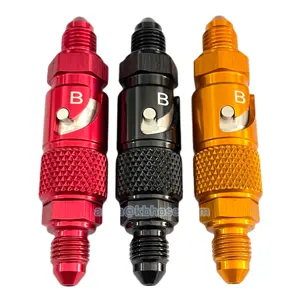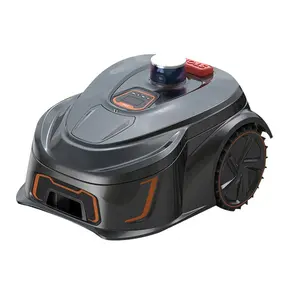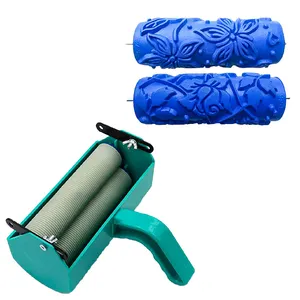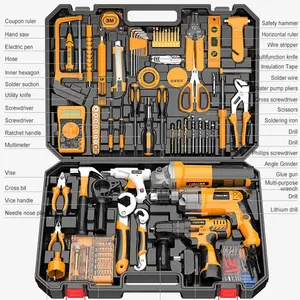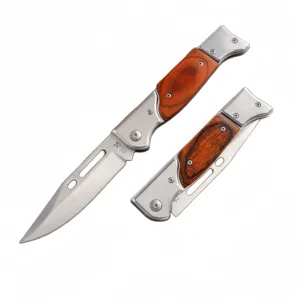Popular in your industry













































Top categories
About 28 mm socket
The 28 mm socket is an essential tool in various industrial and auto repair applications. This versatile component is designed to fit fasteners and bolts of a specific size, ensuring a snug and secure grip that is crucial for efficient assembly and maintenance tasks. The 28 mm socket is not just a singular product but a category that encompasses a range of specifications tailored to meet diverse operational requirements.
Types and Characteristics of 28 mm Sockets
Within the category of 28 mm sockets, there are several types, each with unique characteristics designed to address specific needs. Deep sockets allow for reaching nuts on longer threads, while impact sockets are made with thicker walls for high-torque applications, often used with pneumatic tools. There are also spark plug sockets, which are specially designed with rubber inserts to protect the ceramic body of a spark plug. Each type is a testament to the versatility of the 28 mm socket in catering to various tasks, from automotive repair to heavy machinery maintenance.
Structure and Operation of the 28 mm Socket
The structure of a 28 mm socket is meticulously designed for optimal performance. It typically consists of a six-point or twelve-point recess, intended to fit around a hexagonal fastener head. The drive end of the socket is squared to attach to a ratchet or a wrench, allowing for torque to be applied. Some sockets feature a knurled surface around the base, providing a better grip for hand-turning. The interior walls are often slightly tapered to ensure a tight fit, which is critical for the socket's operation, preventing slippage and rounding off of the fastener edges.
Materials and Benefits
The materials used in 28 mm sockets are chosen for their strength and durability. Carbon steel is favored for its toughness and ability to absorb shock, while stainless steel is selected for its resistance to rust and corrosion. The benefits of these materials are manifold; they ensure that the socket can withstand the high torque and force applied during tasks without deforming, while also providing longevity, even in harsh working environments. This durability is crucial in industrial settings where tools are used extensively and need to maintain their integrity over time.
Business Usages and Applications
The 28 mm socket finds its applications in a myriad of business settings. In the automotive industry, it is used for engine work and tire changes. In construction, it assists in assembling machinery and securing structural components. The socket's ability to deliver precise torque ensures that fasteners are neither too loose (which could lead to parts coming apart) nor too tight (which could strip threads or break the fastener). This precision contributes to the safety and longevity of machinery and structures, thereby creating business value by reducing the need for repairs and maintenance.
Functions and Tasks
A 28 mm socket is designed to perform specific tasks with efficiency. It is used to apply torque to turn bolts and nuts, enabling the assembly or disassembly of components. The design of the socket allows it to distribute the applied force evenly around the head of the fastener, minimizing the chance of damage. This function is critical in settings where the integrity of a connection is paramount, such as in automotive suspensions or industrial machinery.
Features and Unique Selling Points
The distinct characteristics of a 28 mm socket include its drive size compatibility, which ensures that it can be used with a variety of ratchets and wrenches. Some sockets also feature a magnetic tip or a through-hole to secure the fastener, enhancing the tool's utility. These unique selling points set it apart from competitors by offering added convenience and functionality to the user.
Benefits and Positive Outcomes
The 28 mm socket solves the problem of applying uniform torque to fasteners, reducing the risk of damage during installation or removal. The positive outcomes of using a high-quality socket include increased safety, improved efficiency, and reduced wear on both the tool and the fastener. For the user, this translates to cost savings and a more reliable performance of the equipment or vehicle.
How to Use and Maintain the 28 mm Socket
Using a 28 mm socket effectively involves selecting the appropriate type for the task, ensuring it is properly attached to the drive tool, and applying torque in a steady and controlled manner. To maintain the socket, it should be kept clean, free of oil and debris, and stored in a dry place to prevent rust. Regular inspection for signs of wear or damage is also important, as is ensuring that the socket is not subjected to forces it is not designed to handle, such as using a standard socket with an impact wrench.
Target Audience and Needs
The target audience for 28 mm sockets includes professional mechanics, industrial maintenance personnel, and construction workers. These users require reliable and durable tools that can withstand frequent use and deliver consistent results. The 28 mm socket meets these needs by providing a tool that is both versatile and robust, capable of performing in a variety of settings and applications.
What are the considerations for industrial use of the 28 mm socket?
For industrial use, the 28 mm socket must be chosen with precision. Considerations include the type of machinery, the frequency of use, and the conditions in which it will be used. High-stress environments may necessitate a socket with a higher grade of steel and a finish that can withstand constant exposure to harsh substances or extreme temperatures.
Can the 28 mm socket be integrated with automated systems?
Yes, the 28 mm socket can be integrated with automated systems. Its standardized design allows for compatibility with automated torque tools and machinery, facilitating efficient and precise fastening in mass production or complex assembly lines. When integrating, ensure that the socket's specifications match the system's requirements to avoid any operational discrepancies.
How does the 28 mm socket contribute to safety and efficiency in operations?
The 28 mm socket contributes significantly to operational safety and efficiency. Its precise fit prevents slippage and fastener damage, which can lead to accidents or equipment failure. The use of high-quality materials ensures that the socket can handle the applied forces without breaking, thus maintaining a safe working environment. Efficiency is enhanced through the socket's ease of use and the speed with which it can engage with fasteners, reducing downtime and increasing productivity.
